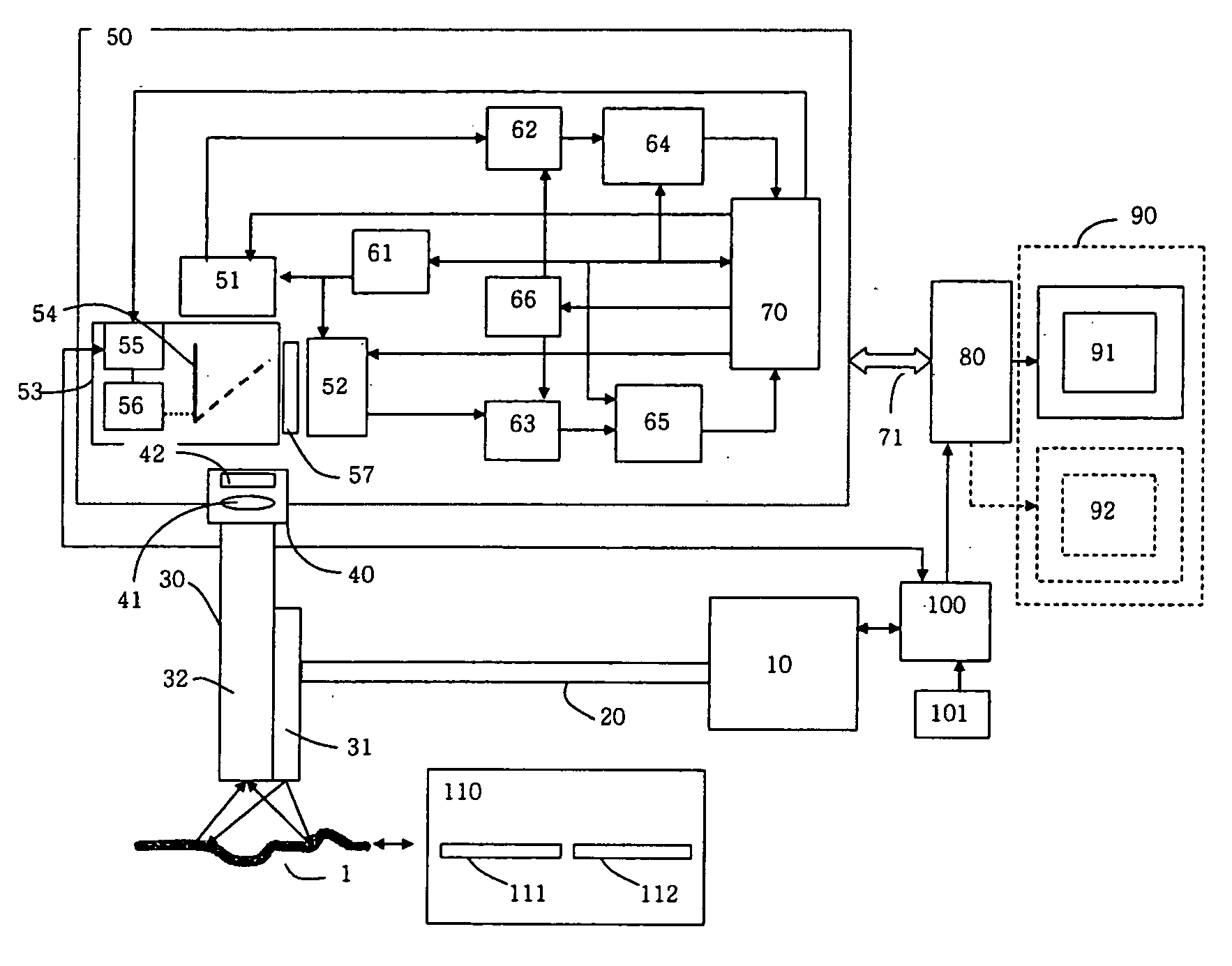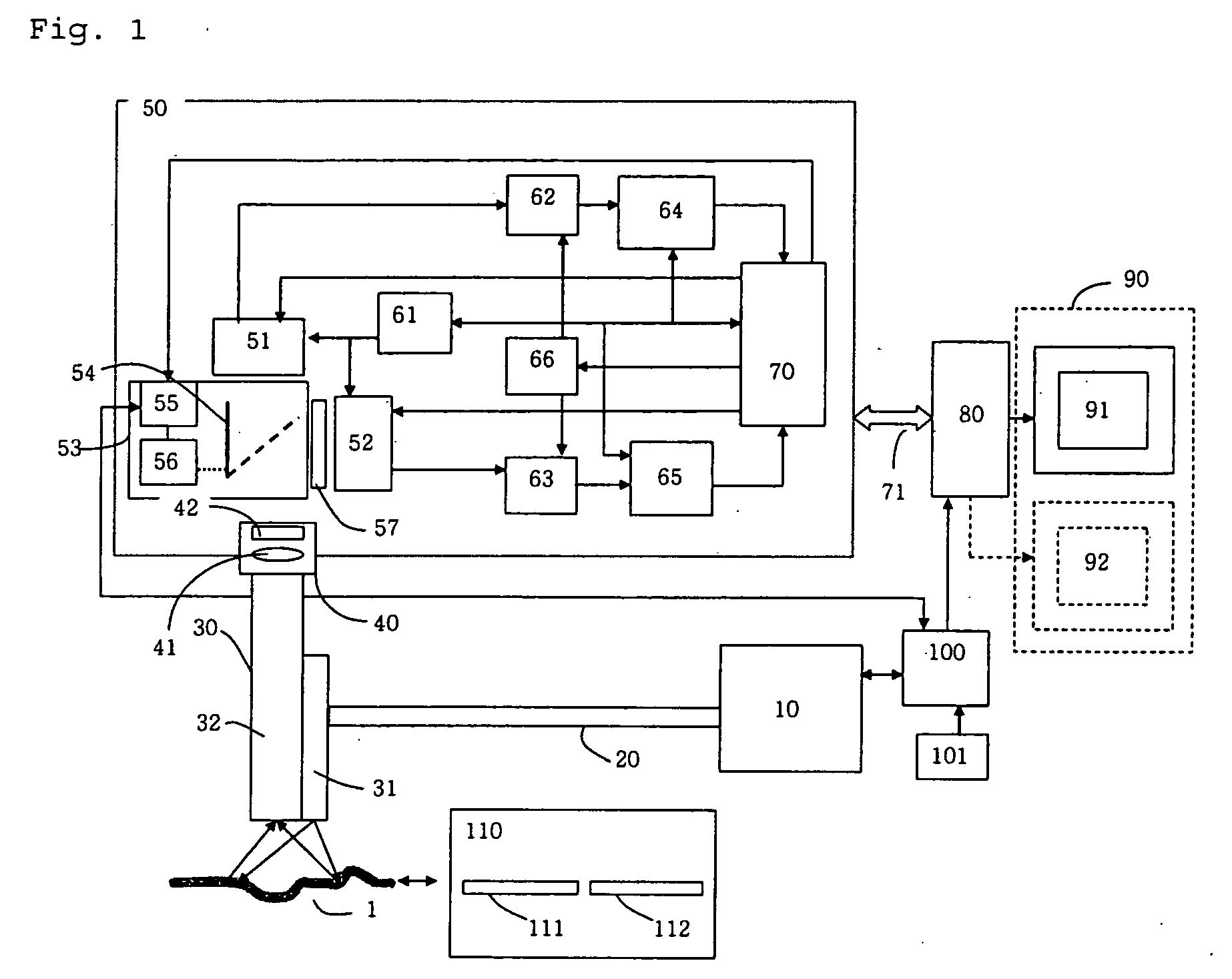Fluorescent endoscope system having improved image detection module
a fluorescent endoscope and image detection technology, applied in the field of fluorescent endoscope system and imaging diagnostic objects, can solve the problems of lower sensitivity and the inability of the observer (e.g., the physician) to correctly recognize the source of fluorescent light, and achieve the effect of reducing frame loss and efficient composition and display of superimposed images
- Summary
- Abstract
- Description
- Claims
- Application Information
AI Technical Summary
Benefits of technology
Problems solved by technology
Method used
Image
Examples
Embodiment Construction
[0031] Hereinafter, a preferred embodiment of the present invention will be described with reference to the accompanying drawings. In the following description and drawings, the same reference numerals are used to designate the same or similar components, and so repetition of the description on the same or similar components will be omitted.
[0032]FIG. 1 is a block diagram showing the construction of a fluorescent endoscope system according to a preferred embodiment of the present invention. The fluorescent endoscope system includes a composite optical source module 10 connected to an optical source cable 31 provided in the endoscope. The composite optical source module 31 uses incoherent light as an optical source and provides white light for normal visual observation of a diagnostic object 1 (in a normal endoscope mode) or short-wavelength light for fluorescent excitation to simultaneously observe fluorescent light and reflected excitation light (in a fluorescent observation mode)...
PUM
 Login to View More
Login to View More Abstract
Description
Claims
Application Information
 Login to View More
Login to View More - R&D
- Intellectual Property
- Life Sciences
- Materials
- Tech Scout
- Unparalleled Data Quality
- Higher Quality Content
- 60% Fewer Hallucinations
Browse by: Latest US Patents, China's latest patents, Technical Efficacy Thesaurus, Application Domain, Technology Topic, Popular Technical Reports.
© 2025 PatSnap. All rights reserved.Legal|Privacy policy|Modern Slavery Act Transparency Statement|Sitemap|About US| Contact US: help@patsnap.com



